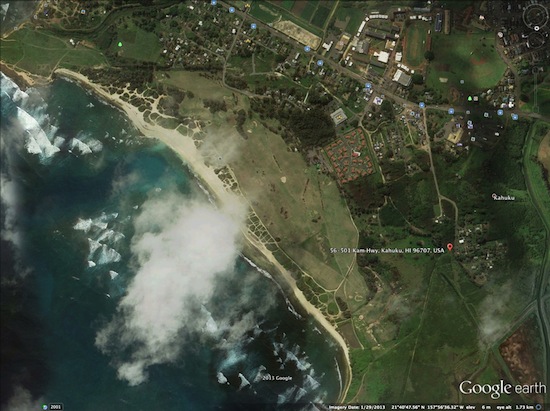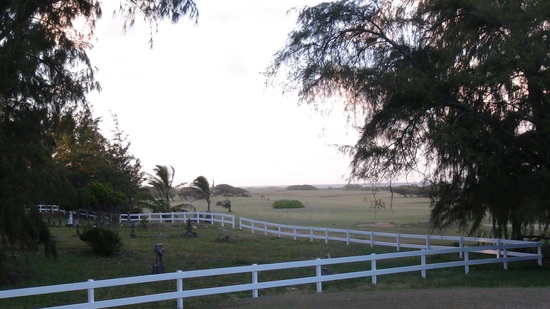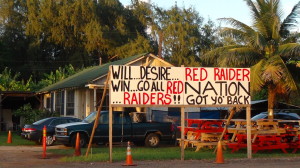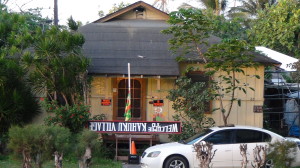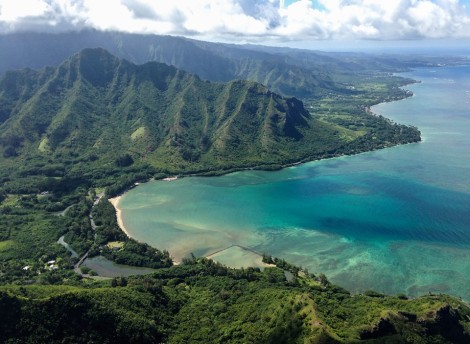Two re-internment ceremonies were held at Kahuku Plantation Camp amidst continuing controversies
On January 11, 2014, a group of Kahuku Plantation Camp residents witnessed the re-internment of ‘iwi kupuna’ that were found in the grounds around the decades-old plantation homes. Landowner Continental Pacific, LLC handling of the ‘iwi kupuna’ cultural and other procedures had precipitated controversies.
At the ceremony, the Kahu distributed printed material of ” Aloha Aina Iwi Kupuna – Protocols – Ten Prayers ( oli, pule, mele )” to those in attendance. They were printed in English and Hawaiian Language versions. The Prayers include The Lord’s Prayers, an ole written by Edith Kanaka’ole, and the Queen’s Prayer ( Ke Aloha O Ka Haku) by Queen Lili’uokalani, as listed below:
The Queen’s Prayer
Your loving mercy
Is as high as Heaven
And your truth
So perfect
I live in sorrow
Imprisoned
You are my light
Your glory, my support
Behold not with malevolence
The sins of man
But forgive
And cleanse
And so, o Lord
Protect us beneath your wings
And let peace be our portion
Now and forever more
~~~
The first ‘iwi kupuna’ was housed in a lauhala box and buried in about a three (3) feet deep setting; fresh sand was shoveled into the plot and a cement block was placed on top of it. There would be a marker later on. (This site is located behind the Rainbow Schools vicinity.)
The two governmental agencies charged to address and regulate ‘iwi kupuna’ issues are 1) The State Historic Preservation Division (SHPD) that falls in under the jurisdiction of the Department of Land and Natural Resources ( DLNR) and 2) The Oahu Island Burial Council (OIBC).
There was a DLNR ranger in uniform and also a DLNR uniformed policeman in attendance.

Kali Fermantez, a recently appointed member of the Oahu Island Burial Council was also in attendance. He spoke a few words at the first ceremony focusing on respect for the ‘iwi kupuna’ and forgiveness despite the ‘pilikia’ surrounding the Kahuku Plantation Camp.
We later asked permission to video tape our questions and his responses regarding procedures but he declined, explaining he was a very private person. His wish was respected.
After the first re-internment ceremony, Kahuku villagers walked to the next re-internment ceremony at Simplicio Caban’s home. ‘Iwi Kupuna’ human remains were found next to his house when water pipe trenching was being done.
Villagers gathered around in reverence as the second re-internment ceremony (abbreviated this time) was conducted.

Kawika Farm from SHPD held the second set of ‘iwi kupuna’ at the Saturday’s re-internment ceremonies.
This metal plate was provided by SHPD as a marker as well as a caution for future encounters with trenching in the area. The metal plate should help reveal the significance of this site, according to Farm from SHPD.
The fresh sand covered SHPD’s metal plate. They said it would be leveled and finalized later.
On this day, the dead may appear to be put to rest but the living are forced to fight on.
While the ceremonies were going on at the mauka side of the Kahuku Plantation Camp, golfers can be seen at the 122-acre Kahuku “Municipal” Golf Course on the makai side. The iconic beachfront course is also undergoing a watershed transformation; it’s on the verge of being sold to a Chinese investor. Residents worry that the course could be transformed into another resort-residential subdivision or an expensive golf course that the public can no longer afford.
In the meanwhile, the above Condominium Spatial Unit V- 21 has been cleared and footings can be seen for a new house. This spatial unit is located next to Kahuku Village Plantation Association President Glen Maghanoy’s former plantation home in the background.
Maghanoy‘s eviction was approved by Judge Hillary Gangnes. Professional movers completed the Maghanoy eviction during the Thanksgiving of 2013. Maghanoy was on the mainland visiting with his daughter and claimed that valuable items were stolen from him, including his guitars, tool box, about $3,000 cash (hidden inside the house), and his children’s deceased mom’s black pearl jewelry.
Because Maghanoy was not present at the execution of the Writ of Possession by the movers, he could not take pictures of the event. Neighbors had signed declaration of seeing the guitars being laid on the grounds; in fact, one of the movers was playing Maghanoy’s ukulele.
The day’s re-internment ceremonies focused on respect for the ‘iwi kupuna’ along with messages of forgiveness.
However, to many Kahuku Plantation Village residents, ‘forgiveness’ cannot be used as a convenient tool for Continental Pacific, LLC and its affiliates to absolve themselves of past wrongs and continuing pilikia that surround the camp.
About thirty-one (31) long time plantation camp families are in danger of being evicted. Glen Maghanoy and the Eugenio family were the first in line to be evicted.













